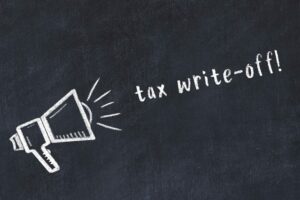
This 800 is divided into 600 (shares held by the public) + 200 (restricted shares held by company insiders). Basic share outstanding includes the present number of shares that are readily available on the secondary market. Float shares of the company are the ones that are available for trading to the public.
What is the role of treasury shares in calculating outstanding shares?

In other words, the treasury stock method accounts for the cash that will come in from option and warrant exercise, and assumes that the cash received will offset a portion of the shares issued. Shares outstanding is a financial number that represents all the shares of a company’s stock that shareholders, including investors and employees, currently own. P/B is often used to value companies in the financial sector (i.e. banks) and is calculated by taking a company’s share price and dividing it by the book value per share. However, due to the fluctuations in share counts between reporting periods, the figure is typically expressed as a weighted average.

Issued Shares vs. Outstanding Shares
The disadvantages of going public include following extra regulations and disclosure requirements. Being a publicly traded company can bring extra scrutiny and increase accounting and other costs.Issuing more shares later also has disadvantages. Shareholders generally don’t like being asked to share outstanding formula cough up more money if they don’t wish to have their ownership stake diluted. Rights issues can damage a company’s reputation and make investors want to steer clear. Thus, to raise the required funds, it’s usually necessary to offer the new shares at a notable discount to their current price.
- Treasury shares are shares held by the company and cannot be sold on the open market.
- And since you did not actually receive any dividends, you do not need to pay any taxes even though your wealth increased as a result of the higher share price.
- Blue-chip stocks have a strong reputation for performing well and paying dividends.
- How much of the business your one share buys depends on the total common stock outstanding, a figure you can easily determine using the company’s balance sheet.
- In other words, as in this example, those shares would not be counted if they improve results, which happens most frequently (though not invariably) when the company is not profitable.
Thanks to the SEC, common stock outstanding is straightforward to calculate
First, the company has to do its job and have strong, consistent financial performance, delivering constant earnings growth. Lowering the number of these shares may inhibit liquidity, but it may also deter short sellers from the stock because of the difficulty of borrowing the shares. Companies that have simple capital structures only need to report basic EPS. Those with complex structures, including potential dilutive securities, must report both basic EPS and diluted EPS. Assuming all option holders exercise, Company A would issue 10 million shares.
How to Calculate Common Stock Outstanding From a Balance Sheet
After that, investors may sell it to another investor on the secondary market. When companies buy back their own shares, the shares remain listed as issued, even though they are not classified as “treasury shares” because the company may resell them. For a small, closely held corporation, the original owners may hold all the issued shares. If you are analyzing a company’s stock, it is important to take into consideration the outstanding shares. For instance, the stock price reflects how investors assess the present worth of future earnings per share. Therefore, the more shares that are outstanding, the more the profit is split.
- A stock split occurs when a company increases the number of its outstanding shares without changing its overall market cap or value.
- The simplest way to obtain the shares outstanding is to look directly on the first page, right before the table of contents.
- Using the weighted average method to calculate outstanding shares is consistently accurate, even when the amount of shares changes over time.
- Outstanding shares differ from treasury shares, which are the shares held by the company itself and which cannot be sold in the open market.
- The company hasn’t taken action yet; it’s just gotten approval to take action and sell some shares if it chooses to.
- In such cases, even a small amount of buying or selling activity can lead to significant price movements due to the limited number of shares available for trading.
- Warrants grant the stock bearer the right to purchase additional shares of outstanding stock from the company’s treasury.
Investors may choose to use weighted averages if they have compiled a position in a particular stock over a period. Given continuously changing stock prices, the investor will calculate a weighted average of the share price paid for the shares. Here’s what you need to know about the different share counts that publicly traded companies use, as well as how you can calculate the number of outstanding common shares. For most companies, the number of authorized shares well exceeds the shares outstanding. In addition, most public companies don’t need to issue more shares, at least in the number required to bump up against the authorized maximum. For many companies, however, even those executing buybacks, the number of outstanding shares and the number of issued shares is the same.
Example calculation

